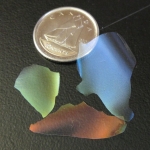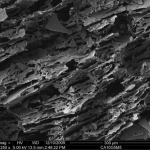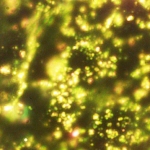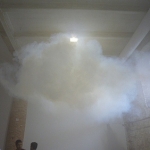Articles Archive for November 2010
FIRE, WOOD »

Not too long ago, a group of researchers at the University of British Columbia (namely associate professor of chemistry Mark MacLachlan, PhD student Kevin Shopsowitz, post-doctoral fellow Hao Qi, and one Wadood Hamad of FPInnovations) were working to create a material that could be used to store hydrogen. From what I hear, British Columbia is a heavily forested part of the world, and the researchers wanted to derive the new material from a byproduct of the local wood processing industry, nanocrystalline cellulose.
Nanocrystalline cellulose, a “building block” of wood pulp, is organized in a helical structure …
EARTH »

If I were about to be shot from a cannon like one of those people at the circus who are routinely shot from cannons, I’d wear a sumo-sized foam suit and I’d also demand that the spot where I’d expect to land would be covered in fluffy chunks of foam as well. I’d want foam strewn pretty much everywhere to absorb the force of my impact because I don’t enjoy the prospect of danger. I guess that’s why I’m not a circus performer. Let’s face it: people wouldn’t exactly be thrilled watching someone being shot from …
FIRE, METAL »

Remember King Midas from Greek mythology? Everything he touched turned to gold. At first this was completely awesome and Midas ran around excitedly touching pots, spoons and incidental house cats, turning them all into gold so that he’d be able to trade the newly be-goldened objects for other things he wanted, like a quart of the very best EVOO or a deluxe chariot with side-impact airbags. But Midas soon realized, much to his chagrin, that turning everything he touched into gold made simple actions like eating, hugging his significant other, or putting on a clean tunic highly problematic.
Image courtesy pakrockerx.com
I was reminded of the …
WATER »

Water. The universal solvent. H2O.
It’s refreshing and highly necessary, but water in the wrong place at the wrong time can cause catastrophic problems in buildings. It’s easy to envision the kind of damage inflicted by a flood, or by ten feet of snow on a roof designed to support six, or even by corrosion caused by salty ocean water at the seashore. But the reason we wrap our buildings in fancy hi-tech paper and smear them with liquid waterproofing has more to do with the insidious effects of water vapor and intra-wall condensation. …
EARTH »

Think of public restrooms as the Arctic expedition, Sahara desert traverse, or trek through the Amazon of architecture; the public restroom is one of those extreme environments where you plan for the worst and hope for the best. Your typical public toilet faces all possible byproducts of humankind, harsh chemical cleaners, random acts of vandalism, water, fungus, insects, rodents, and the full spectrum of microorganisms. Ceramic materials are specified in public restrooms because smooth glazed surfaces are easier to keep clean and damaged tiles can be replaced without too much trouble, but the chemicals required to sanitize public …







